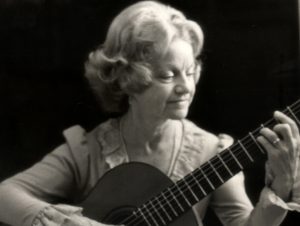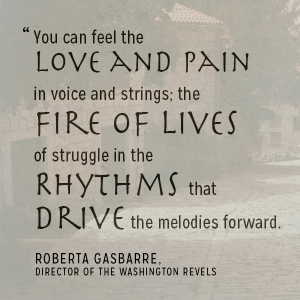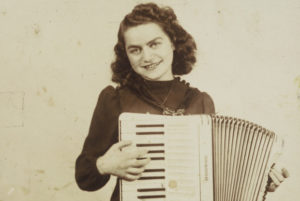 Women played a vital role in maintaining, and probably originating, much of the Sephardic song repertoire. Flory Jagoda, from whom Trio Sefardi (and many other Sephardic groups and soloists) learned several songs, exemplifies what once was common: women singing the old songs and adding new ones to the repertoire. Flory was born in Sarajevo, Bosnia, in 1923, and lived there in her early years. Her mother’s family lived in Vlasenica, a mountain village in the heart of Bosnia. As a child, Flory spent a great deal of time there with her large, extended family. The once-vibrant Jewish community in this region still exists in some physical forms such as old synagogues, cemeteries, and the occasional commemorative plaque, but Jews of Sephardic origin are but a shadow of their pre-war communities.
Women played a vital role in maintaining, and probably originating, much of the Sephardic song repertoire. Flory Jagoda, from whom Trio Sefardi (and many other Sephardic groups and soloists) learned several songs, exemplifies what once was common: women singing the old songs and adding new ones to the repertoire. Flory was born in Sarajevo, Bosnia, in 1923, and lived there in her early years. Her mother’s family lived in Vlasenica, a mountain village in the heart of Bosnia. As a child, Flory spent a great deal of time there with her large, extended family. The once-vibrant Jewish community in this region still exists in some physical forms such as old synagogues, cemeteries, and the occasional commemorative plaque, but Jews of Sephardic origin are but a shadow of their pre-war communities.
With the onset of World War II, the Jewish family life and culture that had survived for centuries in the villages and cities of the Balkans was shattered forever. The Nazis and their local allies deported or slaughtered the Jews; Flory and her parents were among the few who managed to escape. They made their way from Zagreb to Split (both in the former Yugoslavia, now Croatia), and then to Korčula, an island in the Adriatic then under Italian control.
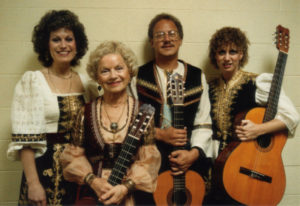 The Italians resisted sending Jews to concentration camps, and Flory and her family spent two and a half years interned on Korčula. In the chaotic final months of the war, when the Italians were no longer able to protect the several hundred Jews on the island, Flory and her parents escaped once more, this time to an area of the Italian coast that was occupied by the Allies. Shortly thereafter, Flory met Harry Jagoda, an American staff sergeant from Youngstown, Ohio. They married in Italy and later settled in Falls Church, Virginia, where they raised four children.
The Italians resisted sending Jews to concentration camps, and Flory and her family spent two and a half years interned on Korčula. In the chaotic final months of the war, when the Italians were no longer able to protect the several hundred Jews on the island, Flory and her parents escaped once more, this time to an area of the Italian coast that was occupied by the Allies. Shortly thereafter, Flory met Harry Jagoda, an American staff sergeant from Youngstown, Ohio. They married in Italy and later settled in Falls Church, Virginia, where they raised four children.
Flory Jagoda learned many of her songs from her nona (Ladino for grandmother) in Vlasenica. Her songs reflect daily life and concerns, customs, and holidays, and they are always sung in Ladino, which was known to her as djidiyo (literally, Jewish or Jew). Her manner of performing these songs comes from what she learned as a child when tango rhythms were popular throughout Europe. Flory’s arrangement of “Madre mia si mi muero” is typical. Harmony singing was common, and all sorts of instruments, including the accordion and guitar, were used for accompaniment. She recorded four albums of her songs and wrote a book including autobiographical notes and many of her songs (see Resources).
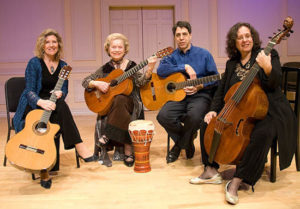
Flory Jagoda continued to teach and perform into her 90s, with her final public performances in the year 2015. She died on January 29, 2021, at the age of 97. Nona Flory was an inspiration to a new generation of musicians, and her compositions—celebrating life, love, family, holidays, and the memories of Sephardic culture of the former Yugoslavia—will be sung by those who cherish the beautiful legacy Flory bequeathed to us. Often called the Keeper of the Flame of Sephardic culture, Flory’s example will keep the fires burning in the hearts and memories of all whose lives she touched.
TRIO SEFARDI & FLORY
Our singer, Susan Gaeta, became Flory’s apprentice in 1992 through the Virginia Foundation for the Humanities Master-Apprentice program. Guitarist and lutenist Howard Bass completed an informal apprenticeship of his own to become a member of Flory’s touring ensemble, and Tina Chancey became a frequent guest on viola da gamba and fiddle. For a quarter-century, we’ve worked together, and now our group Trio Sefardi is ready to help her legacy thrive and grow, “to continue.”
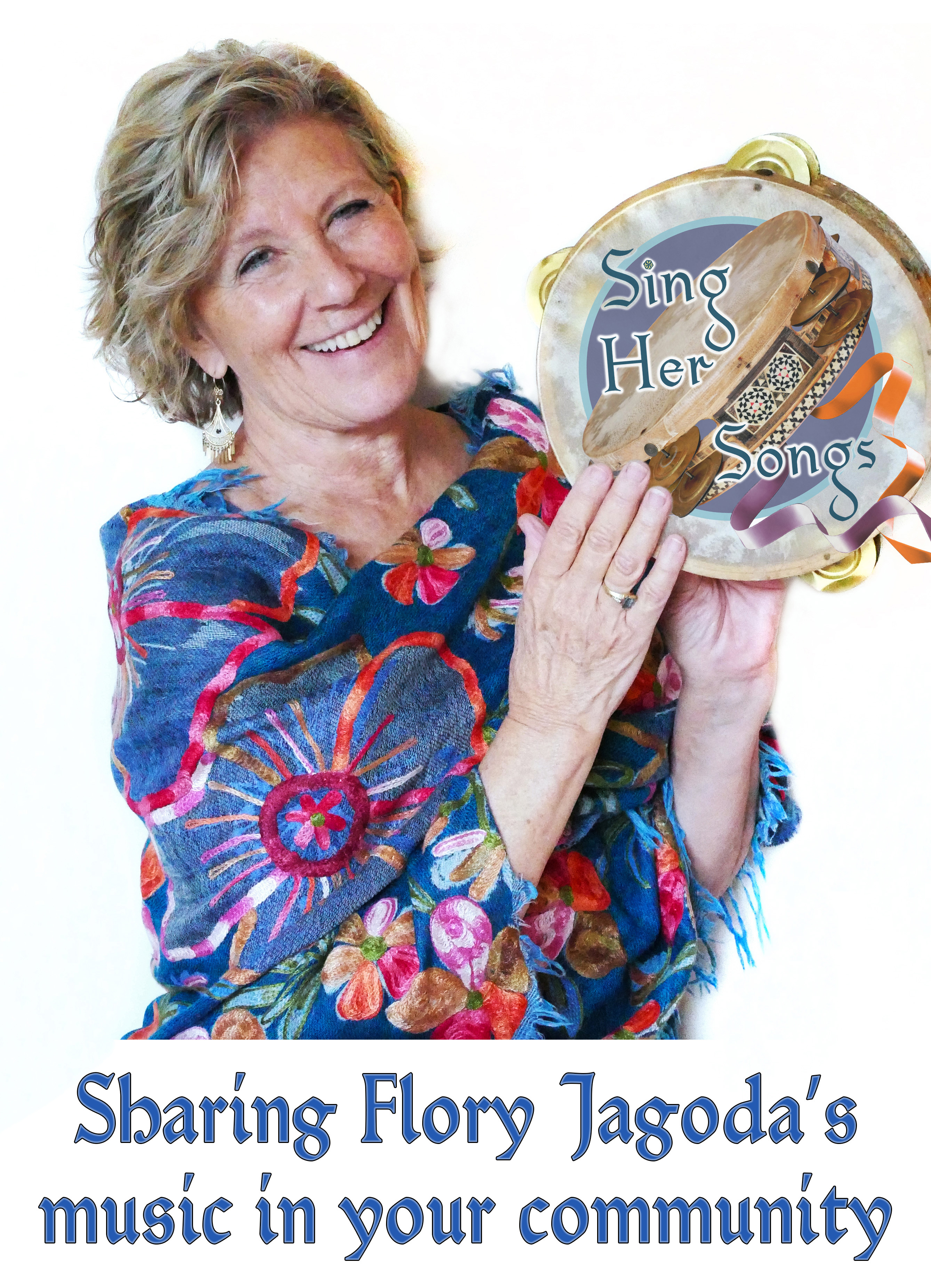
Additional Resources for Flory Jagoda
Sing Her Songs: Sharing the Music of Flory Jagoda in your Community
Trio Sefardi member Susan Gaeta has worked to produce a free program that offers Flory’s songs to a new generation of learners. Listen to the songs as Flory taught them to Susan, then watch with guitar chords, and listen to other musicians and their interpretations of the songs.
Click HERE to learn more or visit:
US Holocaust Memorial Museum Collection
https://www.ushmm.org/search?query=flory+jagoda
https://collections.ushmm.org/search/catalog/irn504836
https://collections.ushmm.org/search/catalog/pa1131611
https://collections.ushmm.org/search/catalog/pa1131531
https://collections.ushmm.org/search/catalog/pa1131599
American Folklife Center at the Library of Congress: Flory Jagoda Interview with Howard Bass https://www.loc.gov/item/2014655548
Remembering Flory: An Interview with Trio Sefardi with Dan Mariachin, CEO, B’nai B’rith International

